Electricity is the hidden hero of your Rust base. Without it, you can’t maintain a reliable defense — auto turrets, lighting, and traps all depend on stable power.
Below is a short, practical breakdown of how Rust’s electrical system works and how to build three simple circuits that any beginner can assemble.
Knowledge Base: Terms and Core Principles
rWm (rust watt minute) — the in-game unit of energy that represents how much power a battery can store.
-
Small Battery: ~150 rWm, max output 10 units (lasts about 15 minutes under full load).
-
Medium Battery: ~900 rWm, up to 50 units.
-
Large Battery: ~24,000 rWm, up to 100 units.
It’s important to remember about power loss — around 20% of energy is lost during transfer or charging. Always plan your generation and storage capacity with this in mind.
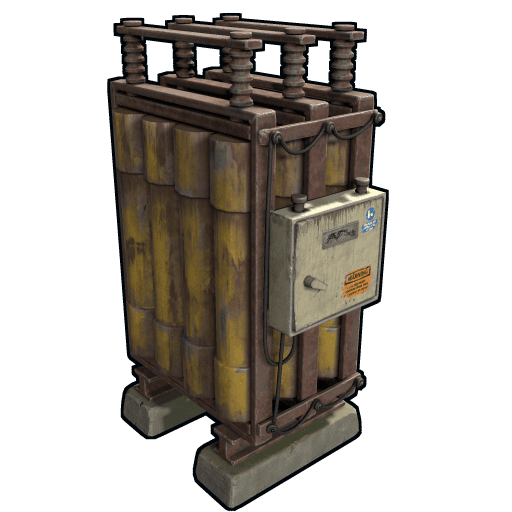
Power Sources
Solar Panel
- Produces up to ~20 units during the day (depends on angle and weather) and doesn’t work at night.
- Available early in the game — place it on your roof and orient it toward the sun; multiple panels can be linked together for higher output.
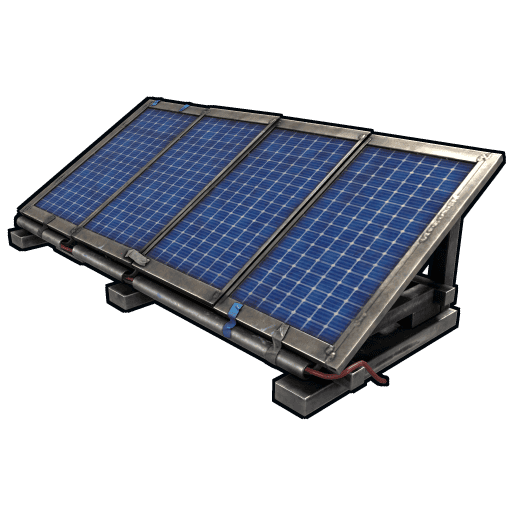
Wind Turbine
- Unstable but provides 24/7 power — the higher you place it, the better and more consistent the output.
- It’s loud and expensive, but it keeps your base powered through the night.
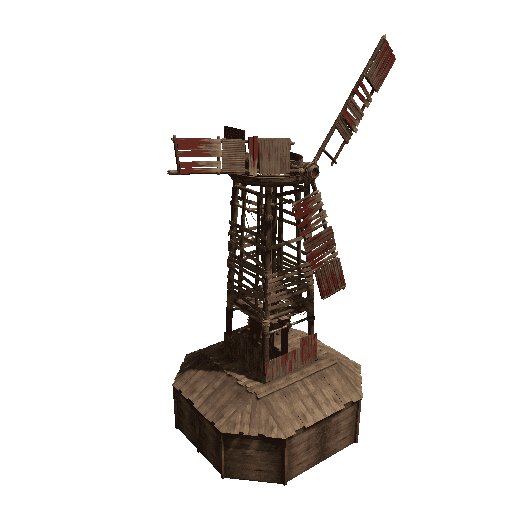
Small Generator
- Provides a stable ~40 units of power at any time.
- Consumes fuel and makes noise — best used as a backup source during cloudy days, long nights, or for emergency recharging.
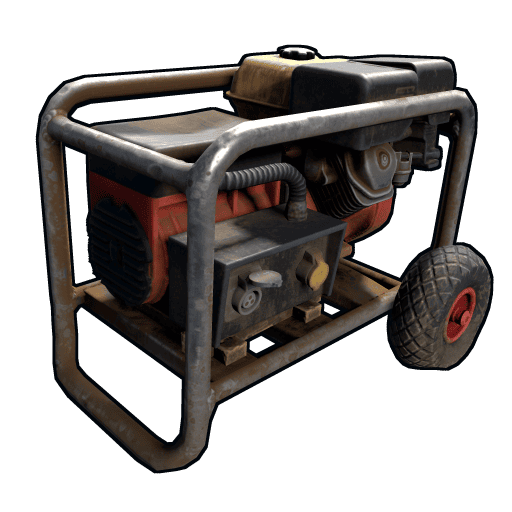
Root Combiner
- Merges two power sources (for example, two solar panels or a panel + wind turbine) into a single line — up to ~100 units of output.
- Used to charge batteries faster or supply power-hungry circuits.
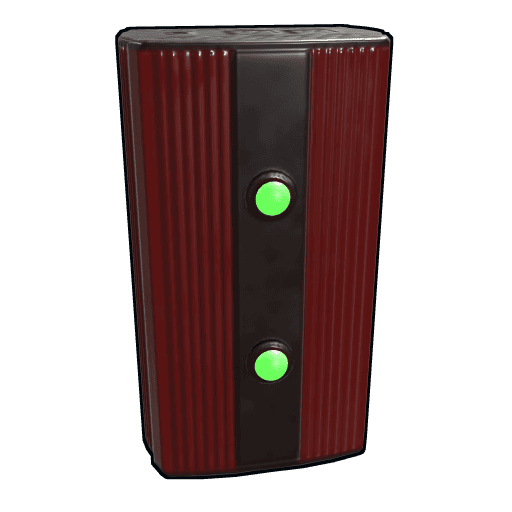
Storage and Distribution
Batteries
Batteries store generated energy and supply it to connected devices:
- Small (10 output units) — ideal for lights and sensors.
- Medium (50 units) — supports turrets and lighting for a small base.
- Large (100 units) — powers complex circuits and large systems.
Tips:
- Place batteries indoors and protect them — explosions can damage or destroy them.
- Charge them well during the day so they can power your base through the night.
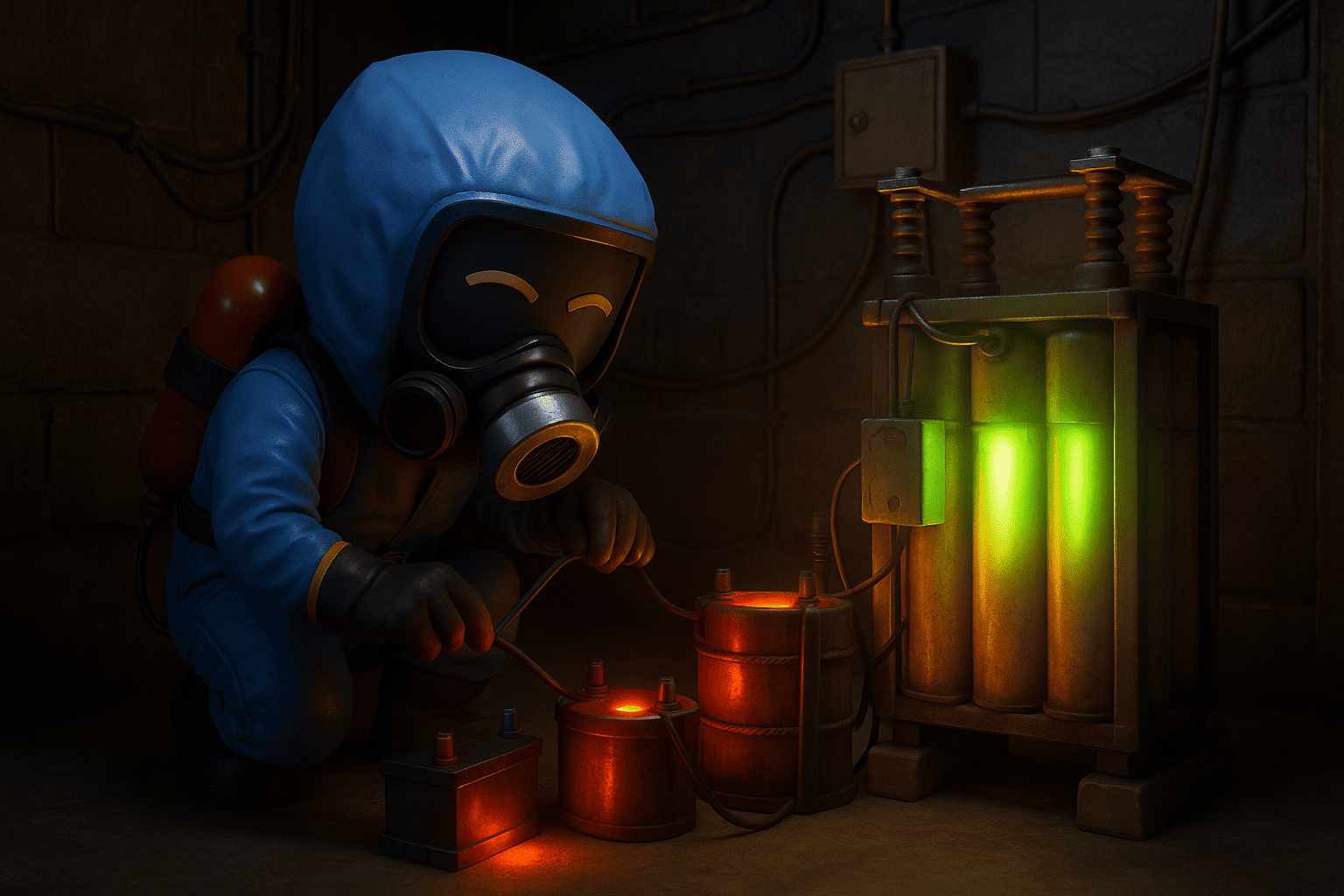
Splitter
Divides one power input evenly into three outputs. Simple and easy to use, but not very efficient — any “excess” power is lost. Best suited for circuits with similar power demands.
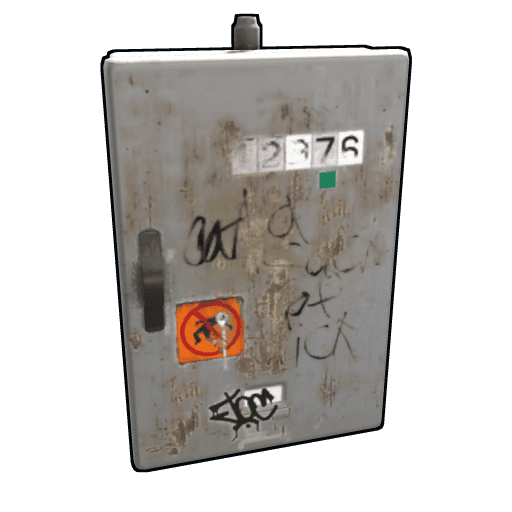
Electrical Branch
- Outputs a specific number of power units to the side branch, while the remaining power continues through the main line.
- Perfect for precise consumers (e.g., turret = 10 units, light = 2 units, etc.), helping to eliminate energy waste.
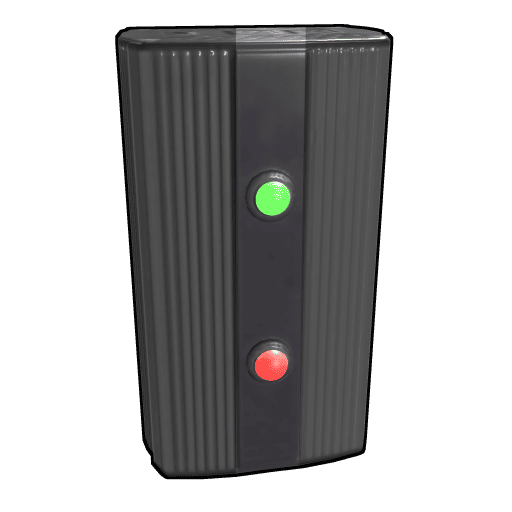
Logic Components
- Switch — manual on/off control. Use it as a master switch for your entire base.
- Timer — supplies power for a limited time (e.g., 10 seconds) before shutting off. Useful for traps, lighting, or timed mechanisms.
- Blocker — cuts power to the output when there’s a signal on the side input (perfect for day/night photo relay setups).
- Counter — counts pulses and can trigger or block power when a set value is reached (useful for anti-spam filters or event tracking).
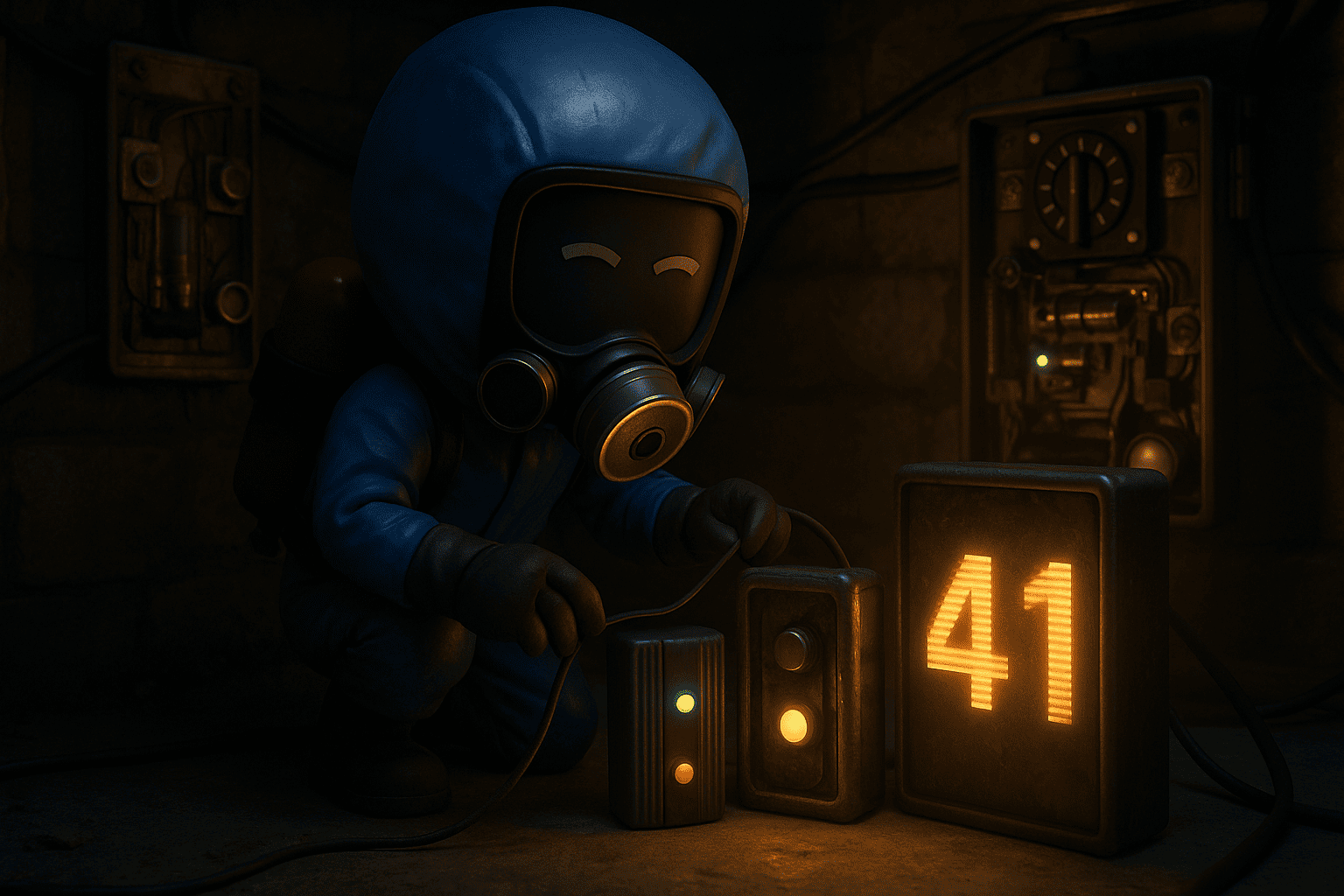
Circuit 1: Automatic Night Lighting
Goal: Lights automatically turn on at night and turn off during the day; the battery charges during daylight.
Components:
Solar Panel → Branch (Branch Out = 1) → (Main Output) Battery → Blocker → Lamps
Setup (briefly):
- Place the solar panel on the roof and aim it toward the sun.
- Connect the panel to the Branch, setting Branch Out = 1 (this will be your “daytime signal”).
- The main output from the Branch goes to the Battery (for charging during the day).
- From the Battery, connect to the Blocker, and feed the Branch Out (1 unit) into the Block input of the Blocker.
- From the Blocker’s output, run power to the lamps (through a Splitter or another Branch if needed).
How it works:
- During the day, the solar panel sends 1 unit of power to the Block input — the Blocker cuts the lights off, and the main energy goes to charging the battery.
- At night, the panel stops producing power → no signal on the Block → the Blocker lets power from the battery flow to the lamps.
Advantages: Saves energy during the day; provides stable, hands-free lighting at night.
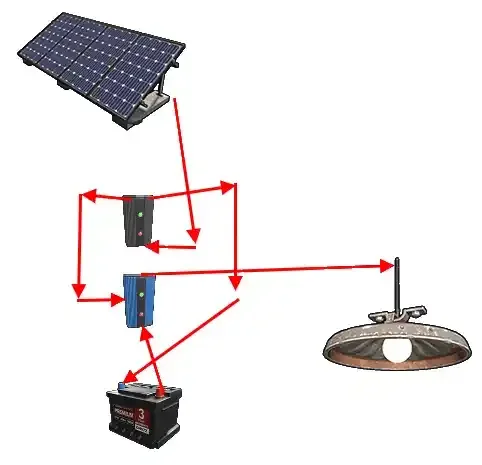
Circuit 2: Turret with Autonomous Power
Goal: Keep an Auto Turret running 24/7 without manual input, while also powering an additional device.
Components:
2 Solar Panels (or 1 Panel + 1 Wind Turbine) → Combiner → Medium Battery → Splitter → Turret (+ additional consumer)
Setup (briefly):
- Mount two solar panels on the roof and connect them to the Combiner.
- The Combiner’s output goes into the Battery.
- From the Battery, connect to a Splitter.
- One Splitter output goes to the Auto Turret (10 units), the second to an extra device (beacon, light, etc.).
- If power is low or excess energy is lost, replace the Splitter with a chain of Branches: assign exactly 10 units to the turret, and send the remaining power downstream.
Explanation:
- A Medium Battery (50 output units) charges during the day using two panels and powers the turret at night.
- On cloudy days, add a Wind Turbine into the Combiner setup or keep a Small Generator as a backup.
Best practice: Place a Switch between the battery and the distribution node so you can quickly cut power to the turrets for maintenance.
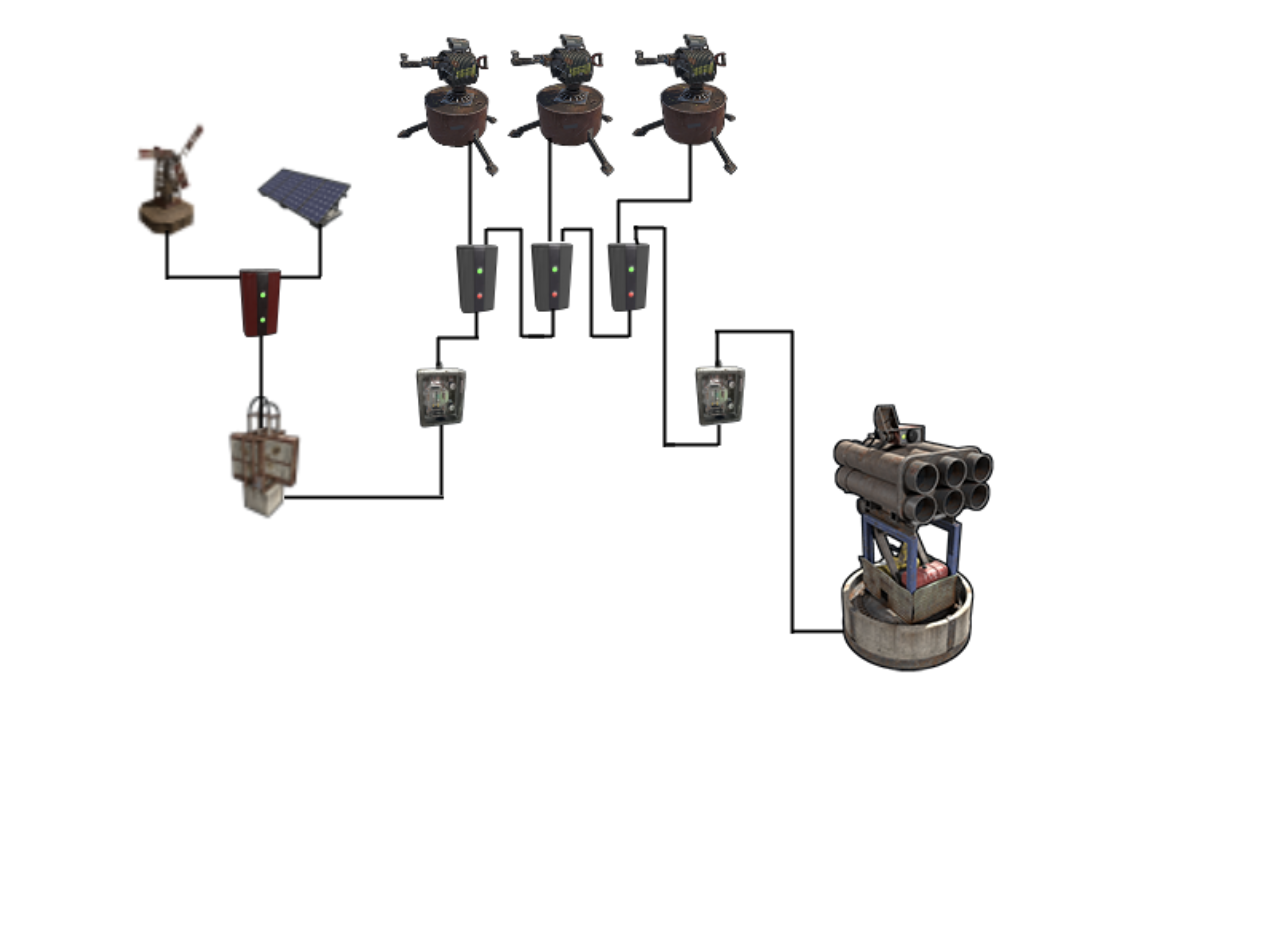
Circuit 3: Door Alarm System
Goal: Create a loud alert when someone approaches or opens the door.
Components:
Small Battery → HBHF Sensor or Laser Detector → Audio Alarm (Siren)
Setup (briefly):
- Place the HBHF sensor above the door (detects movement) or position a Laser Detector across the doorway (beam break = trigger).
- Connect power from the Small Battery to the sensor.
- Connect the sensor’s output to the siren.
- HBHF settings: Exclude Authorized (ignore authorized players) and Include Others (react to strangers).
Advantages: Instantly sounds the alarm when someone intrudes; you can also enhance it with a warning light (connected in parallel) or even record the triggers using a Counter component.
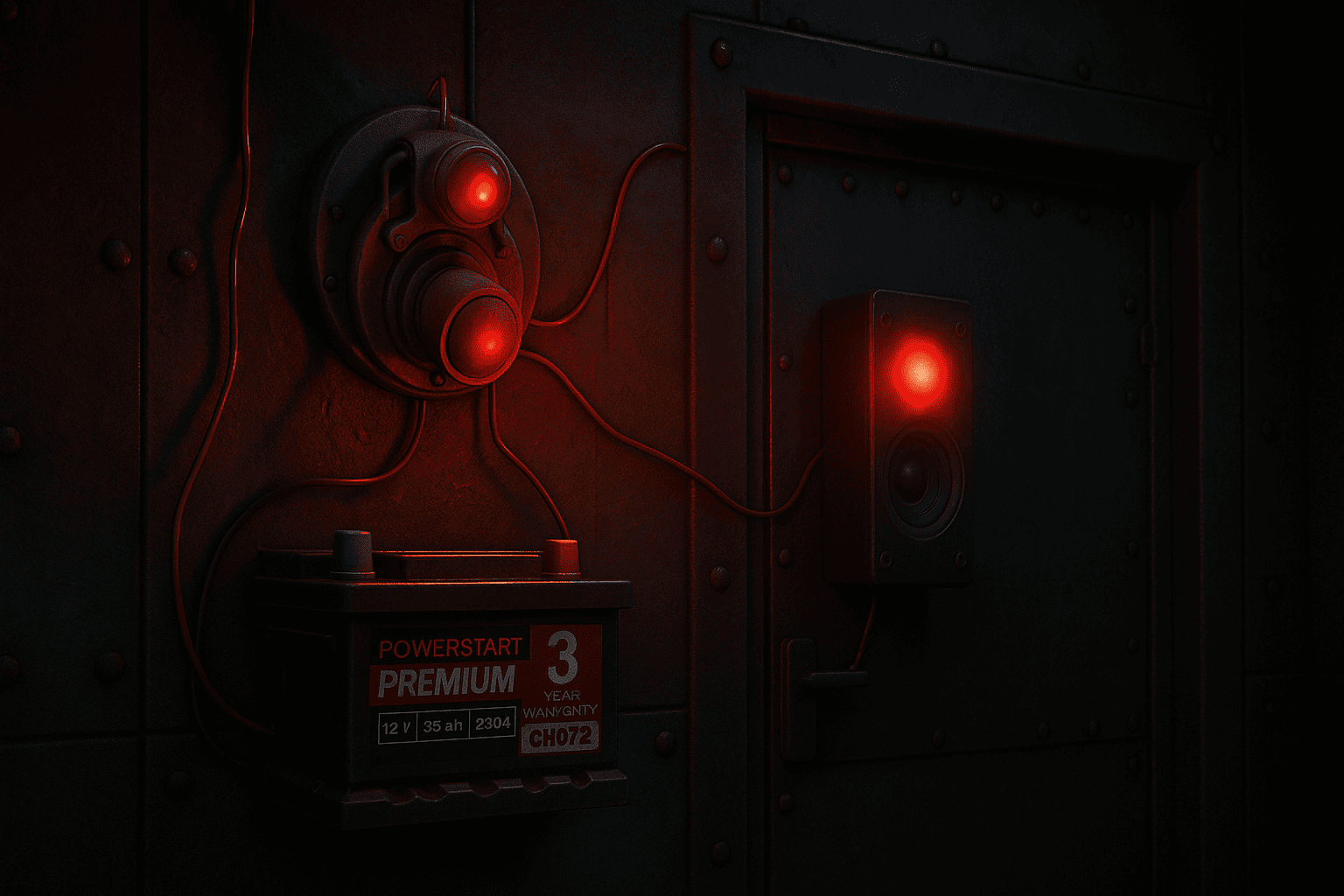
Common Mistakes
- Not enough power. A single solar panel provides up to ~20 units — only during the day.
Solution: install multiple panels, add a wind turbine, or keep a generator as backup. - Battery overload. Batteries have output limits (10 / 50 / 100). If your total devices require more, some will shut off.
Solution: distribute the load between two batteries. - Power loss from splitters. The Splitter divides power evenly and “wastes” the excess.
Solution: use Branches for precise control (set 10 units for a turret — exactly 10 will go there). - Long and exposed wires. The longer the line, the higher the risk of confusion or damage.
Solution: keep wiring short and along the perimeter (walls, ceilings), use color-coding (press R), and avoid external wiring. - Exposed components. Hide batteries, branches, and blockers behind walls or grates. Batteries explode when destroyed — don’t place them near the TC or loot rooms.
- No power-saving mode. Add Switches to subsystems so you can turn off unnecessary devices (e.g., inner turrets or alarms when you’re online). This greatly extends battery life.

How to Calculate How Many Panels You Need
- Add up the power draw of your consumers (turrets, lights, sensors).
- Estimate nighttime duration (about 15 minutes of real time on most servers).
- Required rWm reserve = total consumption × night duration.
- Check battery capacity: daytime generation must refill the night usage including losses.
- If it’s not enough, increase sources (more panels/wind) or add capacity (medium/large battery).
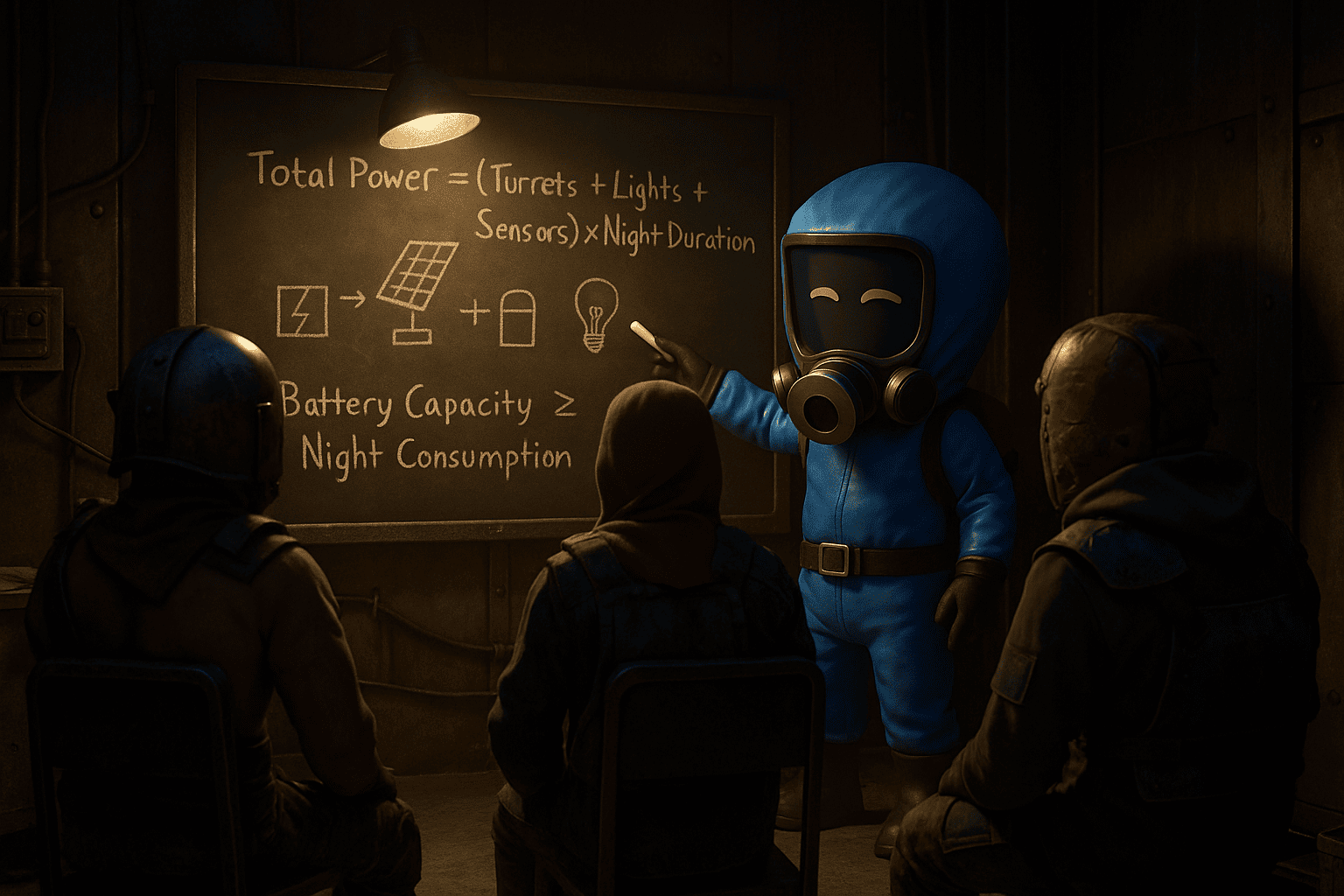
Quick Checklist Before Logging Out
- Solar panels are oriented toward the sun, and the wind turbine is placed as high as possible.
- Batteries are charged (enough to last until sunrise).
- Turrets and lights receive the exact amount of power needed (branches are calibrated).
- Wires are short and protected, all components are hidden.
- Door alarm is tested, HBHF sensor doesn’t react to authorized players.
Summary
The three circuits — night lighting, autonomous turret, and door alarm — cover about 80% of all everyday electrical needs in Rust. Once you master rWm, batteries, and basic logic components (switch, timer, blocker, counter), you can easily scale your system: add smart automation, backup lines, and prioritized power distribution.
Key principles: distribute power precisely with branches, charge during the day, and hide weak spots (batteries, nodes, and wiring). This way, your base stays “smart” and durable even under harsh wipe conditions — saving you both resources and nerves.
🎮 Want to put theory into practice? Jump into Cobalt Lab — there you can hone your skills, test your luck, and earn bonuses without risking your base.

💡It will be interesting as well:




